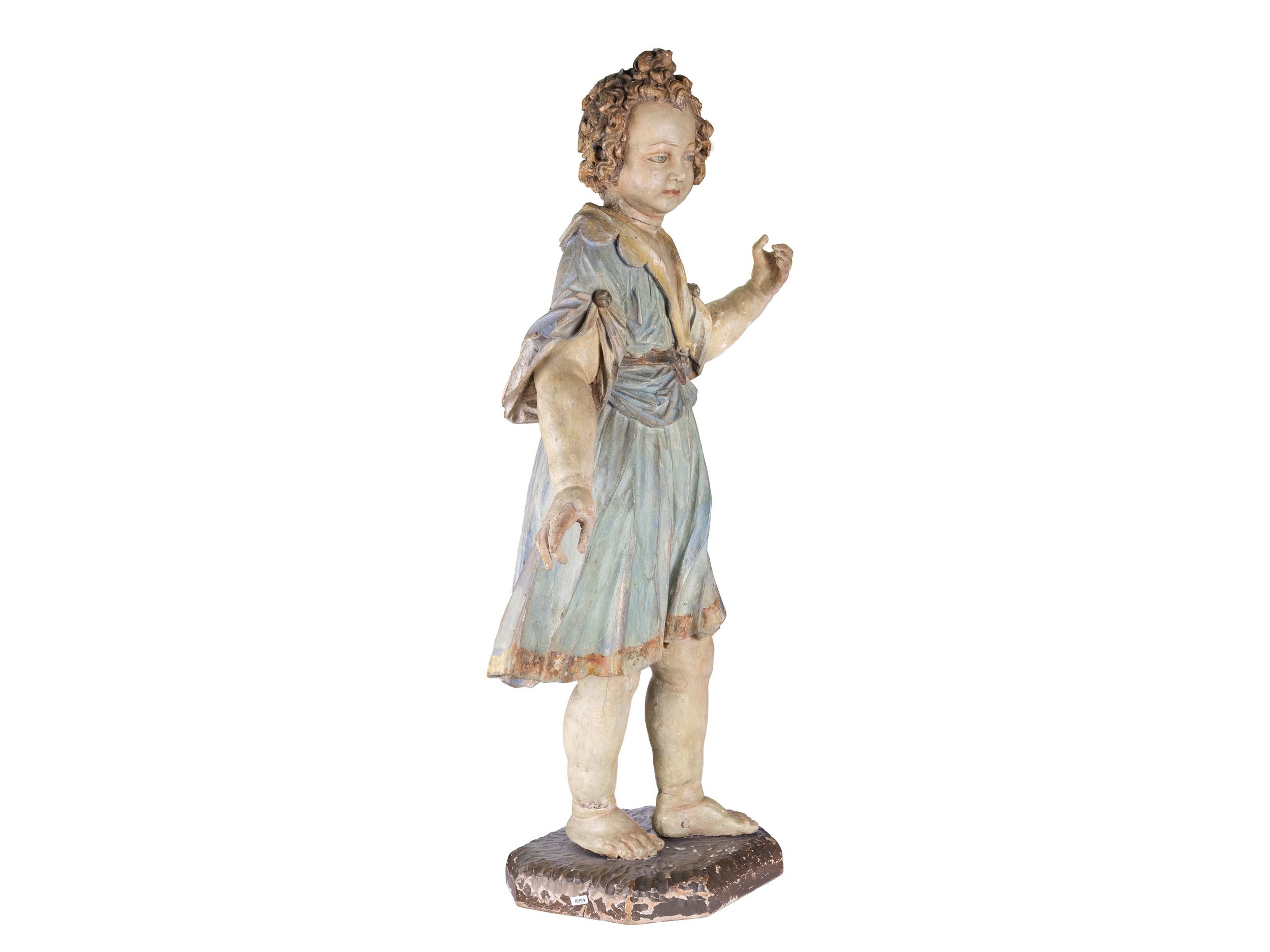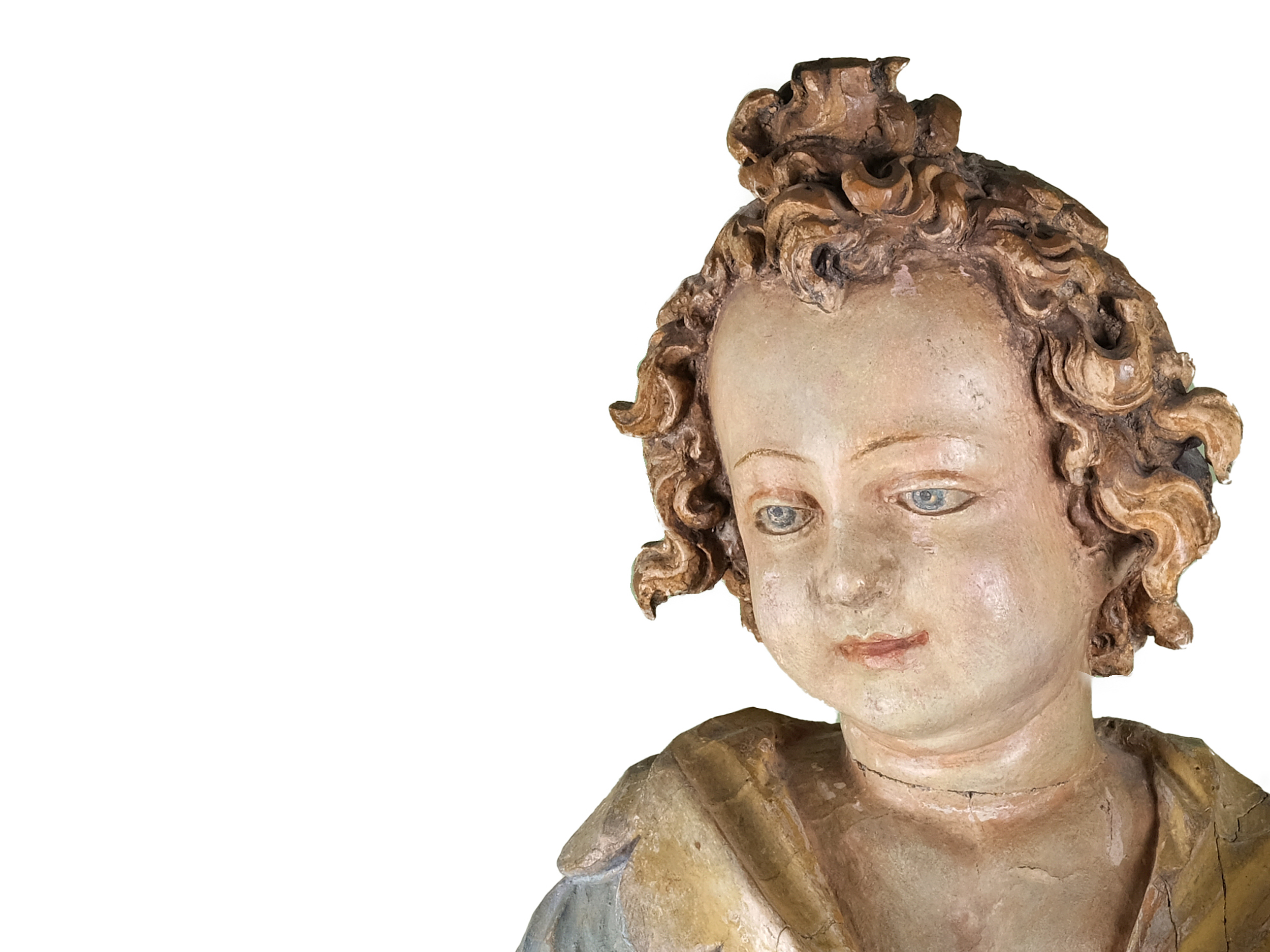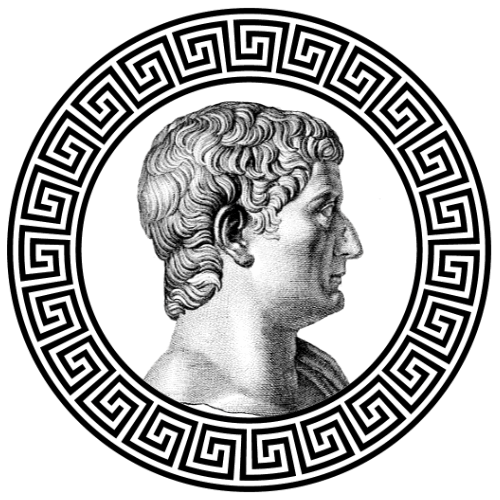David Degler
17th Tiberius Auction
David Degler
Starting price:
€ 1.000
- USD: 1.152 $
- GBP: 878 £
Estimated price: € 2.000 / 4.000
| from | to | bid increment |
|---|---|---|
| 0 € | 99 € | 5 € |
| 100 € | 199 € | 10 € |
| 200 € | 399 € | 20 € |
| 400 € | 999 € | 50 € |
| 1.000 € | 1.999 € | 100 € |
| 2.000 € | 3.999 € | 200 € |
| 4.000 € | 9.999 € | 500 € |
| 10.000 € | 19.999 € | 1.000 € |
| 20.000 € | 39.999 € | 2.000 € |
| 40.000 € | ∞ | 5.000 € |
David Degler
Germany, ca. 1600-1682, attributed
17th century
Standing angel
Wood carved & polychrome painted
Height 105 cm
Damaged, missing parts
The German sculptor David Regler, who was active in the 17th century, belongs to that generation of South German Baroque artists who contributed significantly to the development of sacred wood sculpture through their combination of technical precision and lively expression. Little is known about his life, but his works testify to an extraordinary sense of movement, materiality, and emotional appeal to the viewer. His figures are characterized by their soft, rounded forms, finely nuanced polychromy, and particularly lively posture—features that place him close to the South German workshops of the High and Late Baroque periods.
In the 17th century, standing angel and cherub figures, even without wings, experienced a particular boom. Such figures often served as decorative or symbolic companions to altarpieces, pulpits, or tabernacles. They embodied virtues, heavenly messengers, or simply the expression of divine joy. Their childlike, idealized bodies and cheerful movements were intended to bring the heavenly realm within reach. The standing figures in contrapposto, with their slightly inclined heads and elegantly positioned limbs, radiate grace and Baroque vitality.
The angel figure shown here is carved from wood, over a meter high, and painted in polychrome. It shows a young putto in a lively pose, in the classical contrapposto: one arm is raised, the other lowered, creating a dynamic, almost dance-like movement. The flesh tones subtly shift between shades of white and pink with a slight blue tint, giving the angel a delicate, almost translucent physicality. The blue tunic is belted and held together at the chest with a brooch. At the bottom, the borders are gathered up by a second brooch, creating a decorative slit in the fabric that further emphasizes the movement.
The round, childlike physiognomy with short, curly, golden hair is particularly characteristic—the high curl above the forehead gives the figure an individual expression. The face, with finely painted eyebrows, large almond-shaped eyes, small nose, and full lips, shows a gentle cheerfulness. The rosy cheeks and carefully applied polychromy emphasize the angel’s liveliness and warmth.
The figure was probably part of a larger altar ensemble or served as a free-standing devotional angel in the nave. The high-quality execution, harmonious proportions, and subtle coloration make it an outstanding example of Baroque sculpture.






